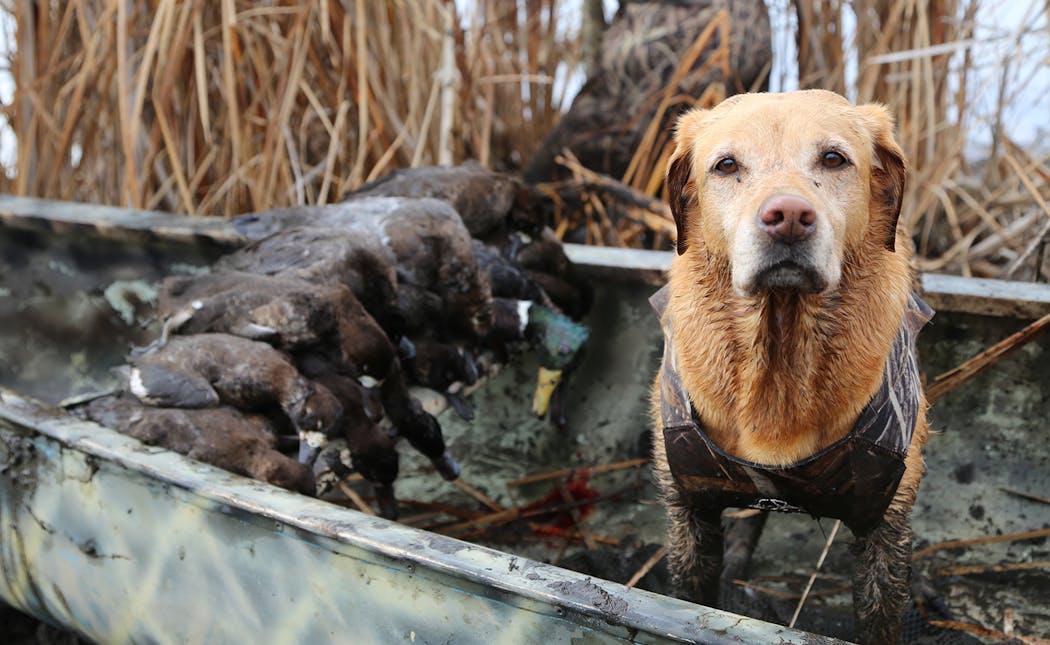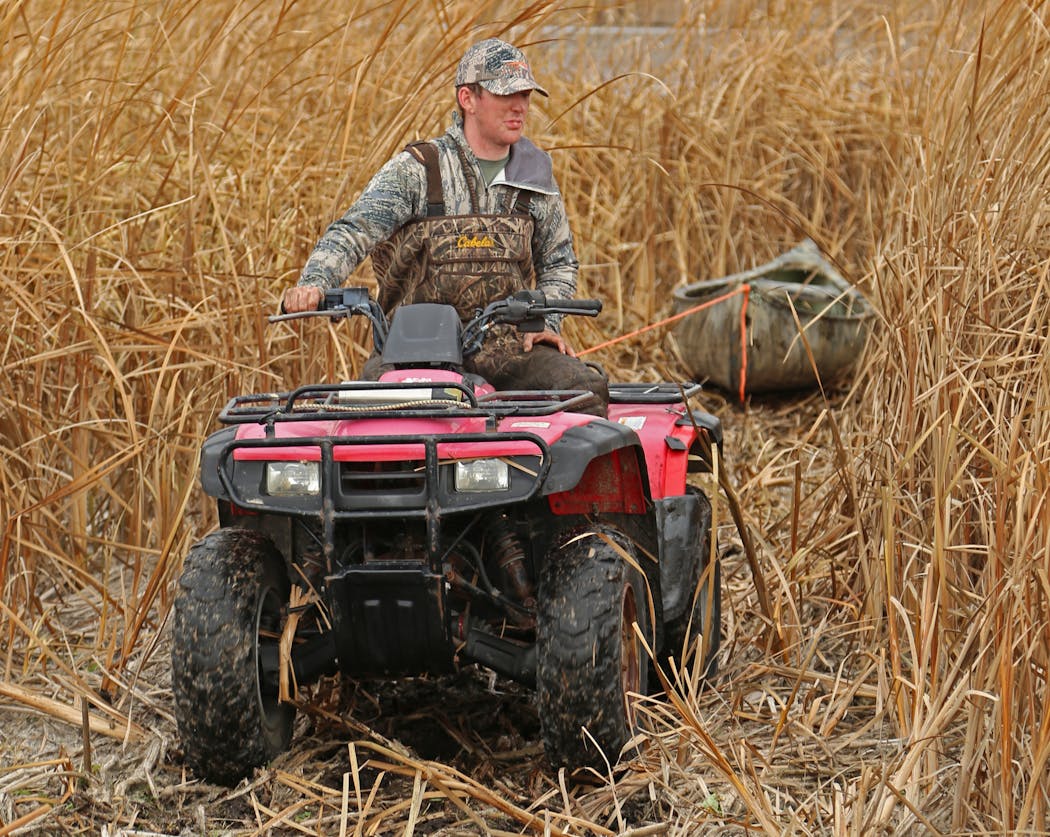DELTA MARSH, MANITOBA – On this huge marsh the worst weather often yields the most birds. Chased out of the far north by ice and snow, late-departing flocks of canvasbacks and bluebills arrive here in October's last days, looking to eat and rest before flying farther south, to Chesapeake Bay or the Gulf Coast.
Sometimes the weather changes so abruptly and so severely these birds arrive en masse on survival journeys. In the old days when Jimmy Robinson ran the Sports Afield duck camp on the marsh's edge, he talked about squadrons of silver-backed bull canvasbacks that emerged from snow squalls to bank over decoys in gale-force winds. In these late days of the season, ice formed near shore and whitecaps impeded hunters' travel in the predawn dark.
On Thursday morning, 40-mph winds flogged southern Manitoba, a big blow. Delta Marsh hadn't yet frozen. But its shores are impenetrably thick with bulrushes in some places, and crossing its open water in such a tempest in a duck boat would be precarious.
The day before, Wednesday, my son Trevor and I had launched our canoe in a finger of water that led to a bay the size of a small lake. Most hunters on this marsh deploy either flat-bottomed, two-ended boats or Grumman sport boats or similar. Each is rowed. But we had a canoe, and between its bow and stern in addition to Trevor and me were two dozen decoys, two shotguns, four boxes of shells and a retrieving dog, Allie.
"Let's paddle to the far end," I said.
Forty-five minutes later, we picked a point from which to scatter bluebill, canvasback, gadwall and mallard decoys.
Then we pulled the canoe into the tall rushes to hide it. As we did, our waders sank up to our shins and sometimes to our knees. Out front the decoys bobbed in the lee of the point and except for the mallards and gadwalls, which were pooled to either side, the blocks extended into the marsh in two long strings, tempting, we hoped, the bluebills and canvasbacks we had seen flying.
Though marshes lack that obvious spectacle of mountains, the two fascinate equally. This is especially true in autumn, when migrating mallards, black ducks, teal, wood ducks, gadwall, widgeon and other dabbling ducks feed on the seeds and leaves of aquatic plants, while diving ducks such as bluebills and canvasbacks prefer roots and tubers.
Delta Marsh especially attracts the divers, which in turn attract diving-duck hunters who, with their boats, waders and decoys, similarly become a part of the marsh.
"Out front," I said.
Like me, Trevor had seen three bluebills flying low to the water, angling for our decoys.
The ducks would either finish their turn, flying to within shotgun range with wings cupped, or as is often the case, disappear in a different direction for no apparent reason.
Crouching in the rushes, we waited.
This was on a morning when the sky bore autumn's mood, with its gray partitioned clouds hanging low. Temperature was in the low 30s.
In these and similar situations, geese with their longer glide paths and premeditated takeoffs and landings commit their intentions far earlier than ducks. By comparison, ducks' nimbleness suggests the alacrity of fighter jets, and in the case of diving ducks, fighter jets with afterburners.
Trevor dropped the lead bluebill, a drake, and I sent Allie to retrieve the bird in the frigid water.
"Back," I said, and the good little dog leaped from the muddy shoreline and broke through the ice that extended into the marsh about 10 yards.
When brought to hand, the duck was fat and well-plumed, its black head iridescent with green highlights. When plucked and roasted in sherry it would provide a fine winter night's fare.
Ducks weren't everywhere. But enough were in the air to keep us excited. Mostly these were bluebills with some canvasbacks and mallards mixed in.
In three hours we had our limits, 16 ducks in all, eight apiece.
•••
Now it was Thursday, the day of the big blow, and we dropped the canoe into a small waterway with an unclear path forward.
This was in the still-dark, and cattails bowed flat on both sides of the canoe.
Guided by headlamps, we paddled ahead a short distance before Trevor, in the bow, exited the canoe gingerly. Climbing atop a small spit of land, he pulled the canoe forward while I push-poled with my paddle.
The pull-over separated us from a tangle of small ponds and waterways we hoped would protect us enough to hunt.
Elsewhere on the marsh, guides from the Sports Afield camp down the road in St. Ambroise, Manitoba, positioned their hunters on points and jetties from which they could target ducks aloft.
The hope was that the powerful counterclockwise winds cascading over the marsh would bring new ducks down from Flin Flon, Manitoba, and that these new birds would stagger and twist in the whirling winds, providing memorable flights.
A keel would have helped hold our canoe from sliding sideways as Trevor and I paddled into the wind. But the canoe had no keel.
Finally, we pulled into the tulles, hid the canoe as best we could and tossed out a half-dozen decoys.
The decoys spun on their anchor chords before pointing bills-to-the-wind.
This occurred as the morning's half-light gathered faintly.
Hours passed.
Puddle ducks flew. But few bluebills or canvasbacks.
In sequence, we dropped a mallard, a gadwall and another mallard. Wearing a neoprene vest, Allie shivered between retrieves.
Except for duck hunting, we had no reason to be where we were.
As long as the wind and cold allowed, we stayed. Then we paddled to shore, ending one of the best hunts ever, well short of our limits.
Dennis Anderson danderson@startribune.com

Anderson: Fired for drunken driving, DNR waterfowl specialist cites hallucinations

Anderson: Recalling blasts from the past, Bud Grant's partner aims for a memorable deer opener

Fewer antlerless permits issued to hunters, but weather, harvest outlook upbeat for deer opener

Anderson: With Bud Grant gone, his partner recalls good times afield while anticipating Minnesota's deer opener





